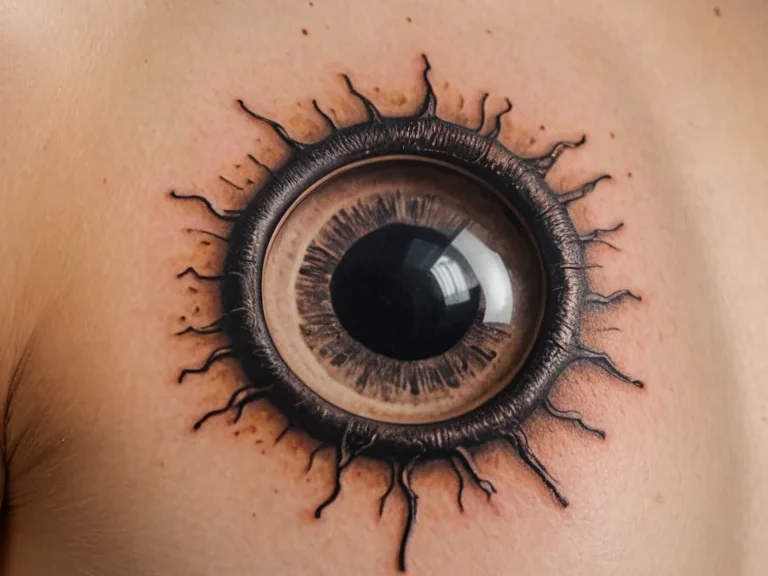The allure of body art is undeniable, with intricate designs and personal symbolism adorning countless bodies. However, as the popularity of tattoos grows, so does the importance of understanding their potential impact on health, particularly when it comes to something as serious as skin cancer. While a tattoo can be a beautiful expression, it’s crucial to consider how it might interact with your skin’s health. This article delves into the critical connection between tattoos and skin cancer detection, exploring how your body art might affect your ability to spot early warning signs and what you can do to ensure both your aesthetic choices and your well-being are prioritized.
Tattoos and skin cancer detection: the critical connection
Your skin is your body’s largest organ, and one of its most vital functions is to act as a barrier against the external environment. It also serves as a visual indicator of your internal health. Subtle changes on the skin’s surface, such as the appearance of new moles or alterations in existing ones, can be early indicators of skin cancer. Dermatologists rely on meticulous observation of these changes to diagnose conditions like melanoma, basal cell carcinoma, and squamous cell carcinoma at their most treatable stages. Historically, the ability to clearly see and monitor moles and skin irregularities has been paramount in early cancer detection. When the skin is covered by a tattoo, this vital visual access can be significantly compromised. This is where the critical connection lies: a tattoo, while a work of art, can inadvertently create a barrier to the very tools needed for safeguarding your skin’s health. Tattoo artists and dermatologists alike emphasize the importance of regular skin self-examinations and professional check-ups, both of which depend on unobstructed views of the skin.

The concern isn’t about the ink itself causing cancer, but rather about how the presence of ink can hinder the crucial process of early detection. Imagine your skin as a canvas that needs to be regularly inspected for any unusual marks. If that canvas is covered with a complex design, it becomes much harder to discern new or changing spots. This is particularly relevant for individuals who have a history of skin cancer or those with many moles, as frequent monitoring is essential for them. The goal is not to discourage tattooing, but to foster an informed approach that balances personal expression with proactive health management. Understanding this connection empowers you to make smarter decisions about your body art and your skin’s long-term health.
How tattoos can obscure early signs of skin cancer
The way tattoos can obscure early signs of skin cancer is multifaceted, primarily revolving around visual interference. Melanoma, the most dangerous form of skin cancer, often begins as a change in an existing mole or the appearance of a new, abnormal-looking spot. These changes can include variations in color, size, shape, or texture. When a tattoo covers a mole or a patch of skin that later develops cancerous cells, these subtle, yet crucial, changes can be masked by the tattoo’s pigments and patterns. The ink, especially in darker shades or dense designs, can blend with or completely hide the natural variations in skin tone and mole appearance that dermatologists look for. For instance, a mole that is slowly changing its color from brown to black, or developing irregular borders, might go unnoticed if it’s covered by a black tribal design or a densely shaded floral pattern. Similarly, a small, developing cancerous lesion that might initially appear as a slightly raised or discolored area could be camouflaged by the intricate linework or shading of a tattoo.
Furthermore, the healing process of a tattoo itself can sometimes cause temporary changes in the skin, such as redness, swelling, or minor scabbing, which can further complicate the observation of underlying skin conditions. While these are normal post-tattoo effects, they can mimic or mask the early stages of certain skin issues. Over time, as tattoos age, the ink can sometimes spread or fade, leading to a less clear visual field, which may further obscure subtle skin changes. It’s also important to consider that new moles or suspicious lesions can develop anywhere on the body, including areas that may already be tattooed. If you have a large, heavily tattooed area, performing a thorough skin self-examination becomes significantly more challenging. You might miss a developing spot simply because you can’t get a clear enough view of the skin beneath the ink. This is why dermatologists often recommend careful consideration of tattoo placement, especially for individuals with a higher risk of skin cancer.
Risks of tattooing over moles and suspicious lesions
Tattooing directly over existing moles or any suspicious skin lesions carries significant risks, primarily related to delayed diagnosis and potential irritation or disruption of the lesion. When a tattoo artist inks over a mole, they are essentially covering a potentially important indicator of skin health with pigment. This act can mask any changes in the mole’s size, shape, or color that could signal the development of melanoma. Early detection is key to successful treatment of skin cancer, and by obscuring a mole, you are effectively losing a critical window for early intervention. In many cases, a mole that is tattooed over may appear to have changed, but it’s impossible to tell if these changes are due to the tattoo ink settling, fading, or spreading, or if they are genuine indicators of cancerous growth. This ambiguity can lead to prolonged periods of uncertainty and potentially a much later diagnosis.

Moreover, the tattooing process itself involves breaking the skin’s surface and introducing ink. This can potentially irritate an existing mole or lesion, causing inflammation or even minor trauma. While the ink is generally considered safe, the repeated puncturing of the skin in the area of a mole could theoretically irritate the cells within the mole. There’s also a concern that the ink particles could be absorbed or interact with atypical cells within a pre-cancerous or cancerous mole. While research is ongoing, the prevailing advice from dermatological professionals is to avoid tattooing over any moles, especially those that look unusual or have been flagged by a doctor. If a mole is identified as potentially concerning, it may need to be biopsied or removed. Tattooing over such a lesion would complicate these procedures and potentially interfere with accurate pathological analysis. Some individuals even report that moles under tattoos have changed in appearance or caused discomfort, though it’s difficult to definitively attribute these changes solely to the tattoo without medical examination.
Alternatives and best practices for tattoo placement
Given the potential challenges tattoos can pose for skin cancer detection, making informed choices about placement is paramount. The most effective strategy is to avoid tattooing directly over any existing moles or birthmarks, particularly those that are large, irregular in shape, or have undergone changes. If you have numerous moles or a personal or family history of skin cancer, it is wise to discuss potential tattoo locations with your dermatologist before committing to a design. They can help you identify areas of your skin that are less prone to mole development or that are easier to monitor regularly. Often, areas like the upper arms, legs, or back, provided they are relatively clear of prominent moles, can be excellent choices.

When considering a new tattoo, especially on areas where you already have many moles, it’s beneficial to choose designs that are less dense or complex. Opting for linework tattoos, minimalist designs, or areas of solid color rather than intricate shading or a high density of black ink can make it easier to keep an eye on the skin underneath. Another proactive approach is to strategically place tattoos in areas where you can still easily perform self-examinations. Think about how you typically check your skin – do you need to contort yourself? Can you see all the areas clearly in a mirror? If a tattoo covers a difficult-to-see spot, it adds another layer of complexity to your monitoring routine. Furthermore, maintaining good records of your skin, perhaps with regular photos of tattooed areas (especially if they cover many moles), can be helpful. This allows you to compare the skin’s appearance over time and more readily spot any new or changing marks. Always prioritize your health; a beautiful tattoo should never come at the expense of your ability to detect potentially life-threatening conditions early.
When to see a doctor: recognizing red flags
Regularly inspecting your skin for any suspicious changes is a crucial part of maintaining your health, whether you have tattoos or not. However, if you have tattoos, this vigilance becomes even more important, especially on and around the tattooed areas. Dermatologists recommend following the ABCDEs of melanoma detection. Understanding these guidelines can help you identify potential problems, even when parts of your skin are covered by ink. The ‘A’ stands for asymmetry, meaning one half of the mole does not match the other. The ‘B’ stands for border irregularity, where the edges of the mole are ragged, notched, or blurred. The ‘C’ stands for color variation, where the mole contains different shades of tan, brown, black, or even patches of red, white, or blue. The ‘D’ stands for diameter, where melanomas are often larger than 6 millimeters (about the size of a pencil eraser), although they can be smaller. The ‘E’ stands for evolving, which is perhaps the most important for tattooed individuals. This means the mole is changing in size, shape, color, elevation, or another trait, or if it starts to itch, bleed, or crust.

If you notice any of these ABCDEs in a mole or skin lesion, whether it’s tattooed over or not, it’s essential to seek professional medical advice promptly. Don’t try to self-diagnose or wait to see if it “goes away.” The earlier skin cancer is detected, the higher the chance of successful treatment. If you have a tattoo and are concerned about a specific spot underneath it, make an appointment with a dermatologist. They have specialized tools, such as dermoscopes, that can sometimes help visualize the skin beneath the ink or assess the surrounding area effectively. Be open and honest with your doctor about your tattoo history and any concerns you have. They are there to help you maintain your health, and providing them with all the necessary information will allow them to give you the best possible care. Remember, your health always comes first, and a responsible approach to body art includes being proactive about skin monitoring.